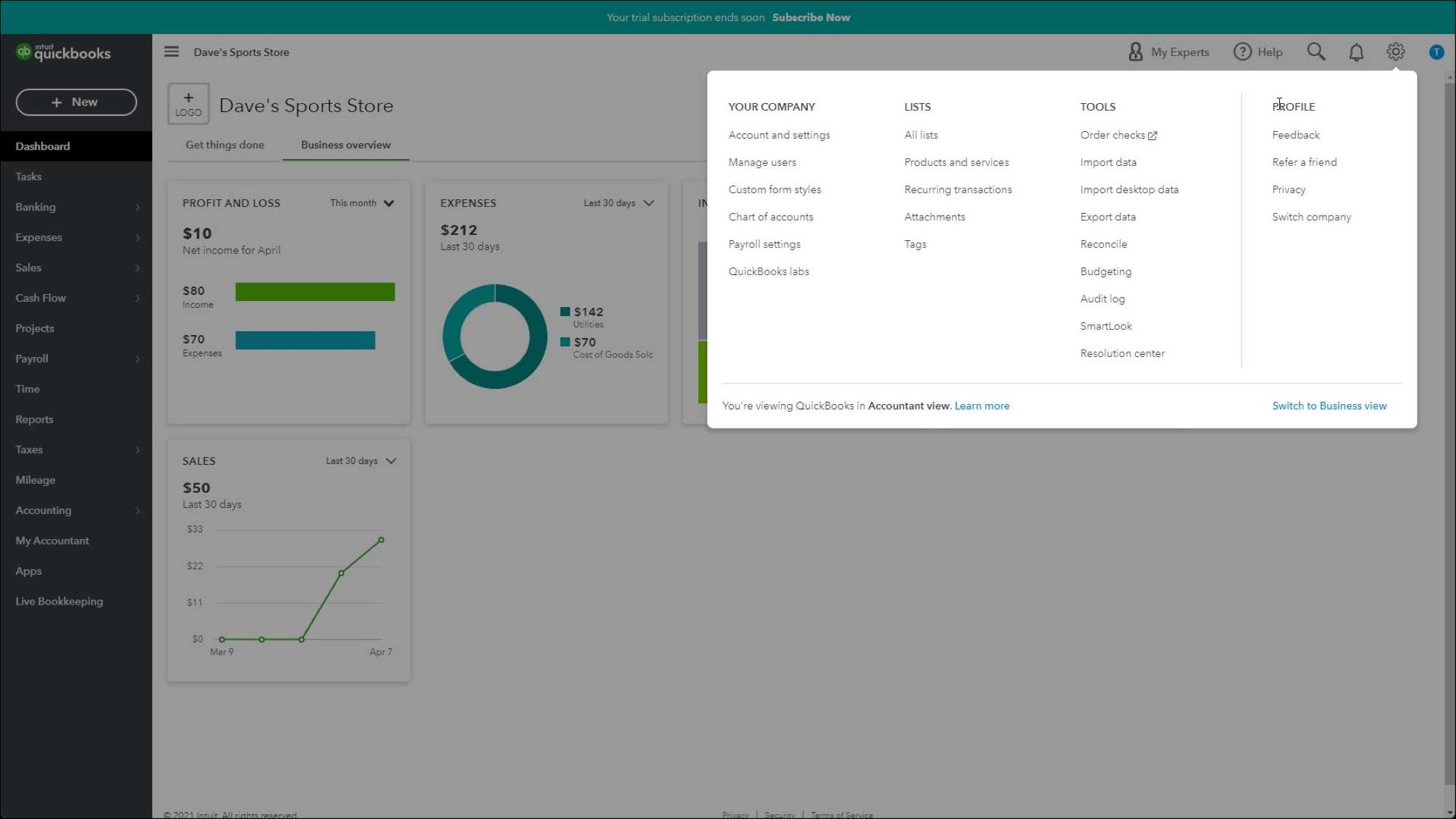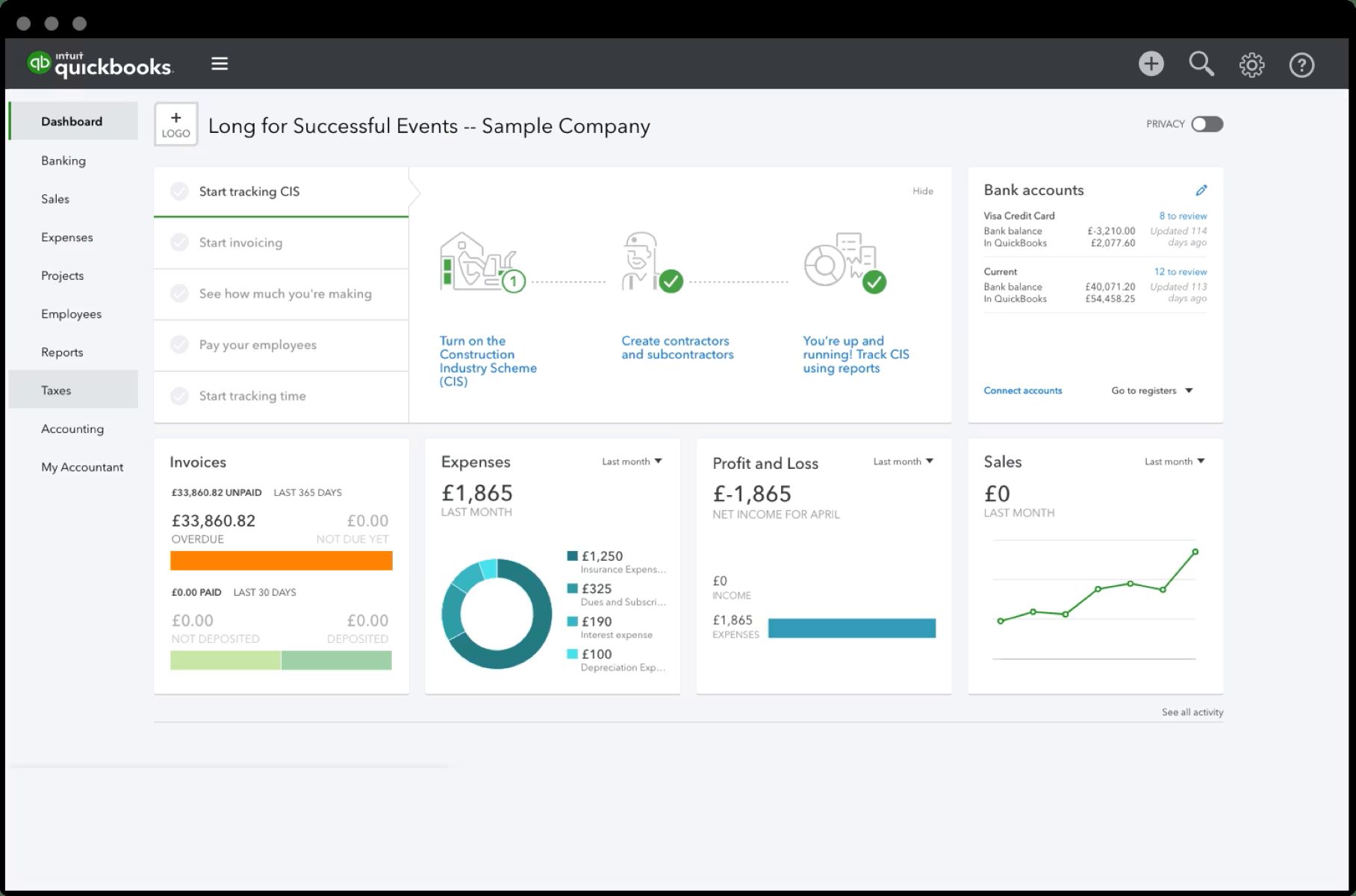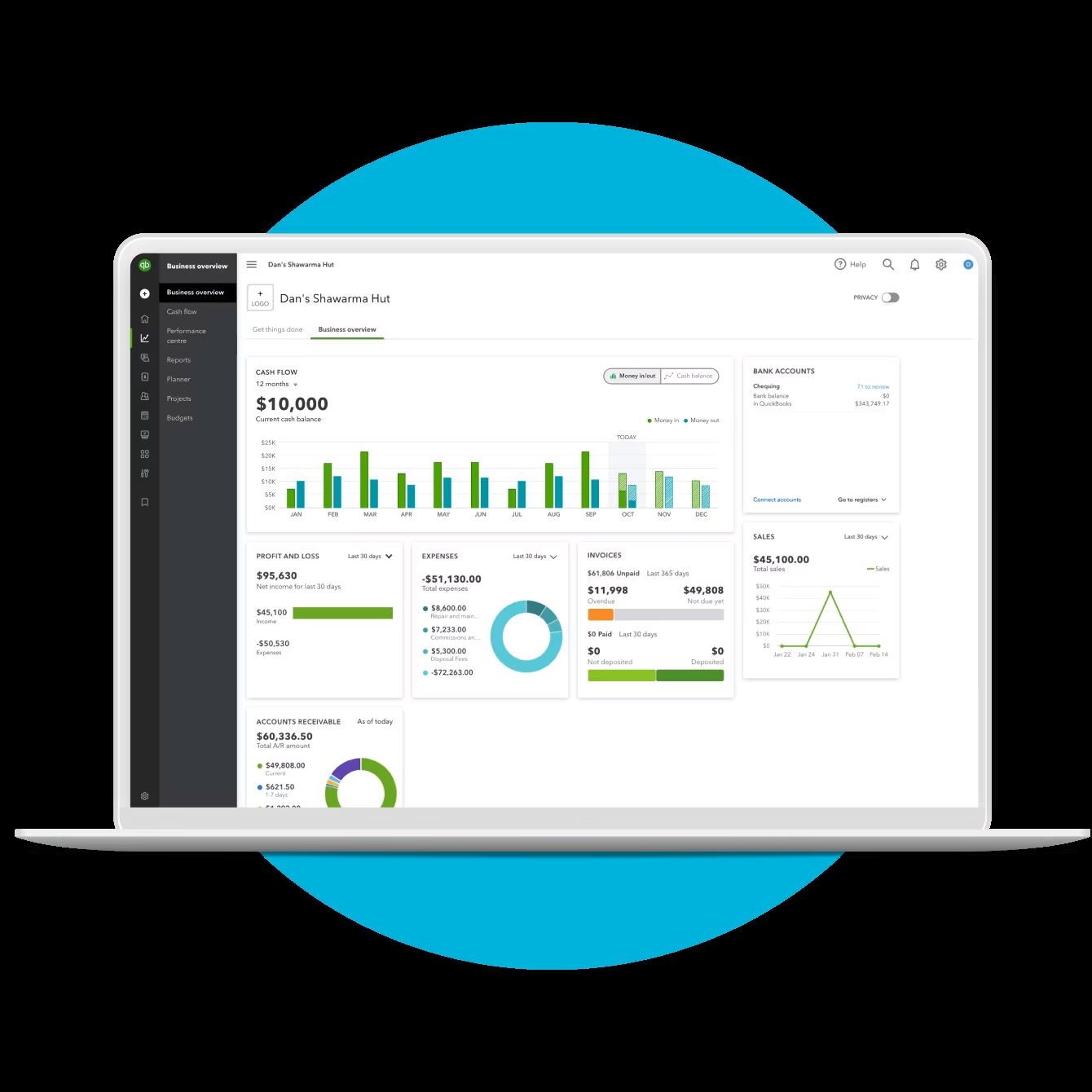Introduction
Welcome to our guide on how to import credit card transactions into QuickBooks Desktop. Managing your credit card transactions in QuickBooks can streamline your financial tracking and help you stay organized. By importing your credit card transactions, you can save time and ensure accuracy in your bookkeeping process.
Importing credit card transactions into QuickBooks Desktop allows you to automate the recording of your expenses and reconcile your credit card accounts more efficiently. With just a few simple steps, you’ll be able to import your credit card transactions in no time.
Throughout this guide, we will walk you through the process of exporting your credit card transactions from your bank, formatting the data, and importing it into QuickBooks Desktop. We will also cover how to review and categorize the imported transactions, as well as how to reconcile your credit card account to ensure everything is accurately recorded.
Whether you’re a business owner, a bookkeeper, or just someone looking to manage personal finances, this step-by-step guide will provide you with the knowledge and tools to successfully import your credit card transactions into QuickBooks Desktop.
Before we delve into the details, it’s important to note that the specific steps may vary slightly depending on the version of QuickBooks Desktop you are using. However, the overall process remains the same, and we will provide instructions that are applicable to most versions.
So, let’s get started and learn how to import your credit card transactions into QuickBooks Desktop!
Step 1: Exporting Credit Card Transactions
The first step in importing your credit card transactions into QuickBooks Desktop is to export the transactions from your credit card provider. Most credit card providers offer the option to export transactions in a CSV (Comma-Separated Values) format, which is compatible with QuickBooks Desktop. Here are the steps to follow:
- Log in to your credit card provider’s online banking portal.
- Navigate to the section or page where you can view your credit card transactions.
- Look for an option or link to export the transactions. It is often labeled as “Export” or “Download” and may be located in the “Account Activity” or “Statements” section.
- Select the desired date range for the transactions you want to export. You may have the option to export all transactions or choose a specific time period.
- Choose the file format as CSV (Comma-Separated Values) to ensure compatibility with QuickBooks Desktop.
- Click on the export or download button to initiate the download of the CSV file.
- Save the CSV file to your preferred location on your computer, making sure to remember where you saved it for later use.
It’s worth mentioning that some credit card providers may use different terminology or have slight variations in their export process. If you’re having trouble locating the export option or need more specific instructions, consult your credit card provider’s support documentation or contact their customer service for assistance.
Now that you have successfully exported your credit card transactions as a CSV file, you’re ready to move on to the next step: formatting the file to ensure smooth importing into QuickBooks Desktop.
Step 2: Formatting the CSV File
Once you have exported the credit card transactions as a CSV file, the next step is to format the file to prepare it for importing into QuickBooks Desktop. This step involves adjusting the column headings and formatting the data to match QuickBooks’ requirements. Here’s how you can do it:
- Open the exported CSV file using a spreadsheet program such as Microsoft Excel or Google Sheets.
- Review the column headings in the CSV file and make sure they match the corresponding fields in QuickBooks Desktop. The key columns to look for are the transaction date, description, amount, and account.
- Rename the column headings in the CSV file to match QuickBooks’ terminology. For example, rename the “Date” column to “Txn Date” and the “Description” column to “Memo” or “Customer/Job”. This step ensures that QuickBooks correctly maps the data during the import process.
- Check the data in each column and make sure there are no special characters or formatting issues that could cause errors during the import. Remove any unnecessary columns or data that is not relevant to the transaction.
- Format the transaction date column to match QuickBooks’ date format. QuickBooks typically uses MM/DD/YYYY, so ensure that the dates in the CSV file follow this format. You can use the format options in your spreadsheet program to modify the date format if needed.
- Ensure that the amount column contains only numerical values and is formatted as a number or currency, without any extra symbols or characters.
- Save the formatted CSV file, making sure to keep it in the CSV format. Avoid saving it as any other file format, such as XLSX or TXT.
It’s essential to double-check the formatting of your CSV file, as any errors or inconsistencies could lead to incorrect data importing or cause issues in QuickBooks Desktop. Taking the time to properly format the file will ensure a smooth and accurate import of your credit card transactions.
With the CSV file now formatted correctly, you’re ready to proceed to the next step: importing the transactions into QuickBooks Desktop.
Step 3: Importing the Transactions into QuickBooks Desktop
Now that you have the formatted CSV file containing your credit card transactions, it’s time to import them into QuickBooks Desktop. Follow these steps to successfully import the transactions:
- Open QuickBooks Desktop and ensure you are logged in to the company file you want to import the transactions into.
- From the top menu, go to “File” and select “Utilities”, then choose “Import” and click on “CSV File”.
- Browse your computer to locate the formatted CSV file you saved earlier. Select the file and click “Open” to start the import process.
- In the Import Wizard window, select “Bank” or “Credit Card” as the account type for the transactions you are importing. This selection depends on the type of credit card account you are importing the transactions into.
- Click “Next” to proceed to the mapping step. Here, you will need to map the columns from your CSV file to the corresponding fields in QuickBooks Desktop. Ensure that the column headers in the CSV file are correctly matched with the appropriate fields in QuickBooks.
- Review the preview of the imported transactions to verify their accuracy. Make any necessary adjustments to the mapping if needed.
- Click “Import” to initiate the import process. QuickBooks will display a progress bar indicating the import status.
- Once the import is complete, QuickBooks will provide a summary of the imported transactions, including any errors or issues encountered during the import process. Review this summary to ensure the transactions were successfully imported.
After importing, QuickBooks will automatically reconcile the transactions with your credit card account. You can view the imported transactions by navigating to the respective credit card account register in QuickBooks.
It’s important to note that depending on the size of the CSV file and the number of transactions, the import process may take some time. Be patient and avoid interrupting the process to ensure a successful import.
Now that you have imported the credit card transactions into QuickBooks Desktop, the next step is to review and categorize the transactions accurately. This will help maintain proper financial records and ensure accurate reporting.
Step 4: Reviewing and Categorizing the Imported Transactions
After importing your credit card transactions into QuickBooks Desktop, it’s crucial to review and categorize them accurately. This step ensures that your financial records are organized and allows for easier tracking and reporting. Follow these steps to review and categorize your imported transactions:
- Open QuickBooks Desktop and navigate to the credit card account register where the imported transactions are located.
- Start by reviewing each transaction one by one. Verify that the transaction details, such as the date, description, and amount, are correct. Pay attention to any discrepancies or errors that may have occurred during the import process.
- If you notice any errors, make the necessary corrections directly in the transaction details. You can update the description, assign a different account or category, and modify any other relevant information.
- Categorize each transaction based on your chart of accounts. Assign the appropriate expense or income account to each transaction to ensure accurate financial reporting. QuickBooks provides a drop-down menu where you can select the relevant account for each transaction.
- Review any unclassified transactions and categorize them accordingly. QuickBooks may not be able to automatically classify certain transactions, and it’s your responsibility to ensure they are assigned to the correct account or category.
- Take advantage of QuickBooks’ rules and memorized transactions features to automate the categorization process. If you have recurring transactions, you can set up rules or memorized transactions to automatically categorize them in the future. This saves time and ensures consistency in your bookkeeping process.
- Once you have reviewed and categorized all the imported transactions, save your changes. QuickBooks will automatically update your financial records and reflect the changes in your reports and accounts.
It’s important to be thorough during the review process to ensure the accuracy of your financial data in QuickBooks Desktop. Properly categorizing your transactions will allow you to generate accurate financial reports and analyze your business’s financial health effectively.
With the imported transactions reviewed and categorized, you’re ready to move on to the final step: reconciling your credit card account.
Step 5: Reconciling the Credit Card Account
Once you have imported and reviewed your credit card transactions in QuickBooks Desktop, it’s important to reconcile your credit card account. Reconciliation ensures that your records in QuickBooks match the statements provided by your credit card provider. Follow these steps to reconcile your credit card account:
- Go to the “Banking” menu and select “Reconcile” from the drop-down menu.
- Select the appropriate credit card account that you want to reconcile.
- Enter the statement’s ending balance from your credit card statement into the “Ending Balance” field.
- Choose the statement date from your credit card statement and enter it into the “Ending Date” field.
- Review the list of transactions displayed in the “Reconcile” window. This list should include all the transactions imported from your credit card and possibly a few additional transactions that weren’t included in the import.
- Check off each transaction on your credit card statement as you find it in the list. If a transaction is missing, make sure it was entered correctly or add it manually.
- Verify that the “Difference” field at the bottom of the “Reconcile” window is zero. If it is not, double-check the transactions and make sure they are correctly marked as cleared or reconciled.
- Once all transactions have been marked as cleared, click on the “Finish now” button to complete the reconciliation process.
Reconciling your credit card account ensures that there are no discrepancies between your credit card statement and the transactions recorded in QuickBooks. It also helps you identify any errors or fraudulent transactions that may have occurred.
If you are unable to reconcile your credit card account or if there are discrepancies that cannot be resolved, it’s recommended to consult with your accountant or reach out to QuickBooks support for further assistance.
Congratulations! You have successfully imported, reviewed, categorized, and reconciled your credit card transactions in QuickBooks Desktop. By following these steps, you can maintain accurate financial records and effectively manage your credit card expenses.
Conclusion
Importing credit card transactions into QuickBooks Desktop is a valuable skill that can greatly simplify your bookkeeping process. By following the steps outlined in this guide, you can successfully import, review, categorize, and reconcile your credit card transactions, ensuring accurate financial records and streamlined financial management.
Throughout this guide, we covered the essential steps you need to take to import your credit card transactions into QuickBooks Desktop. We began by exporting the transactions from your credit card provider in CSV format, followed by formatting the file to align with QuickBooks’ requirements. We then walked you through the process of importing the transactions into QuickBooks, reviewing and categorizing them accurately, and finally reconciling the credit card account to ensure the data matches your credit card statement.
Remember, attention to detail is crucial during each step of the process. Review each imported transaction carefully and assign the appropriate category or account to ensure accurate reporting. Regularly reconcile your credit card account to identify any discrepancies and maintain accurate financial records.
By utilizing QuickBooks’ features, such as rules and memorized transactions, you can automate the categorization process and save time in the future. QuickBooks offers robust reporting capabilities that allow you to generate financial reports and gain insights into your business’s financial health.
Should you encounter any difficulties along the way or have specific questions regarding your unique accounting needs, it is always a good idea to consult with a professional accountant or reach out to QuickBooks support for guidance.
Importing credit card transactions into QuickBooks Desktop is an efficient way to manage your financial records. By following the steps outlined in this guide, you can streamline your bookkeeping process and have a clearer overview of your credit card expenses, enabling you to make informed financial decisions for your business or personal finance.

























